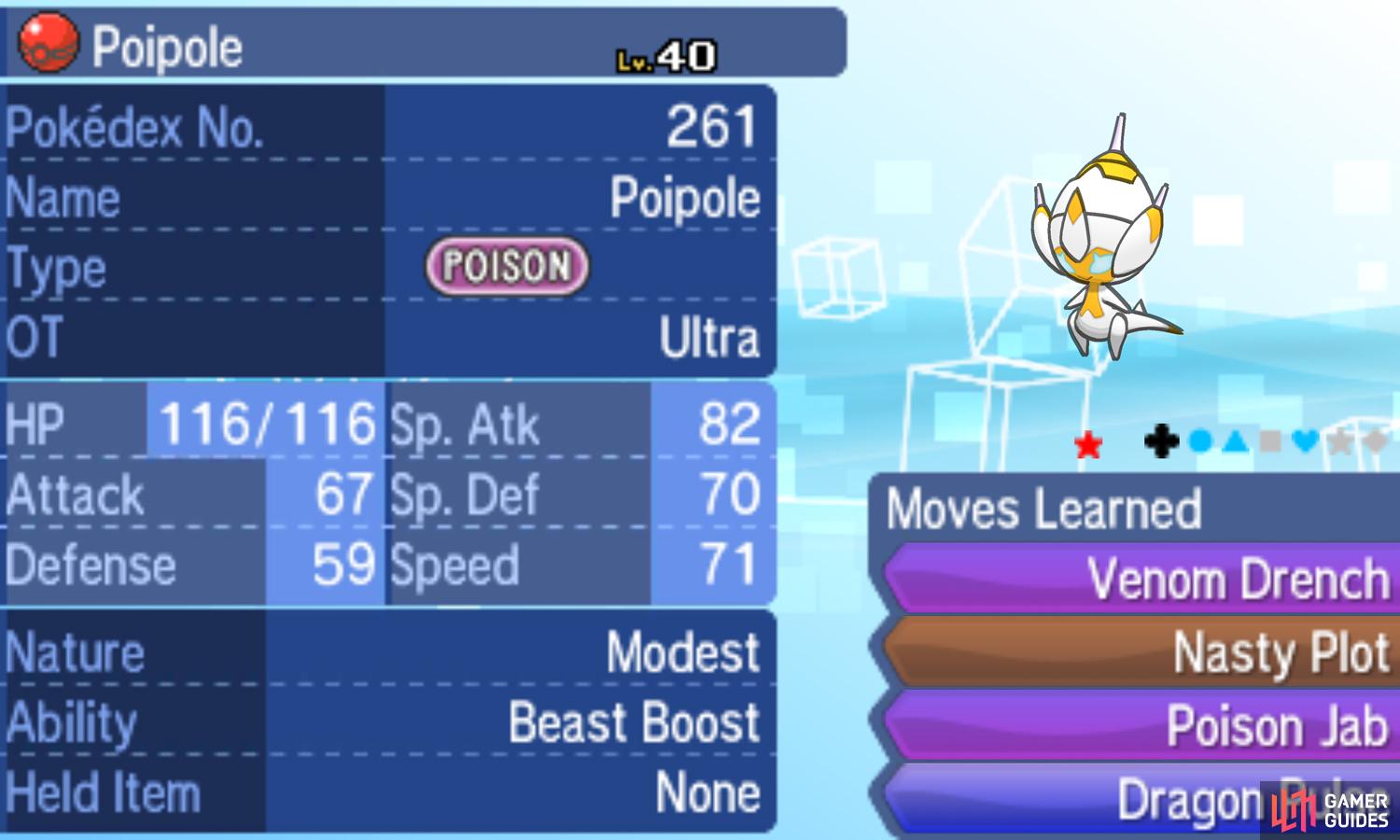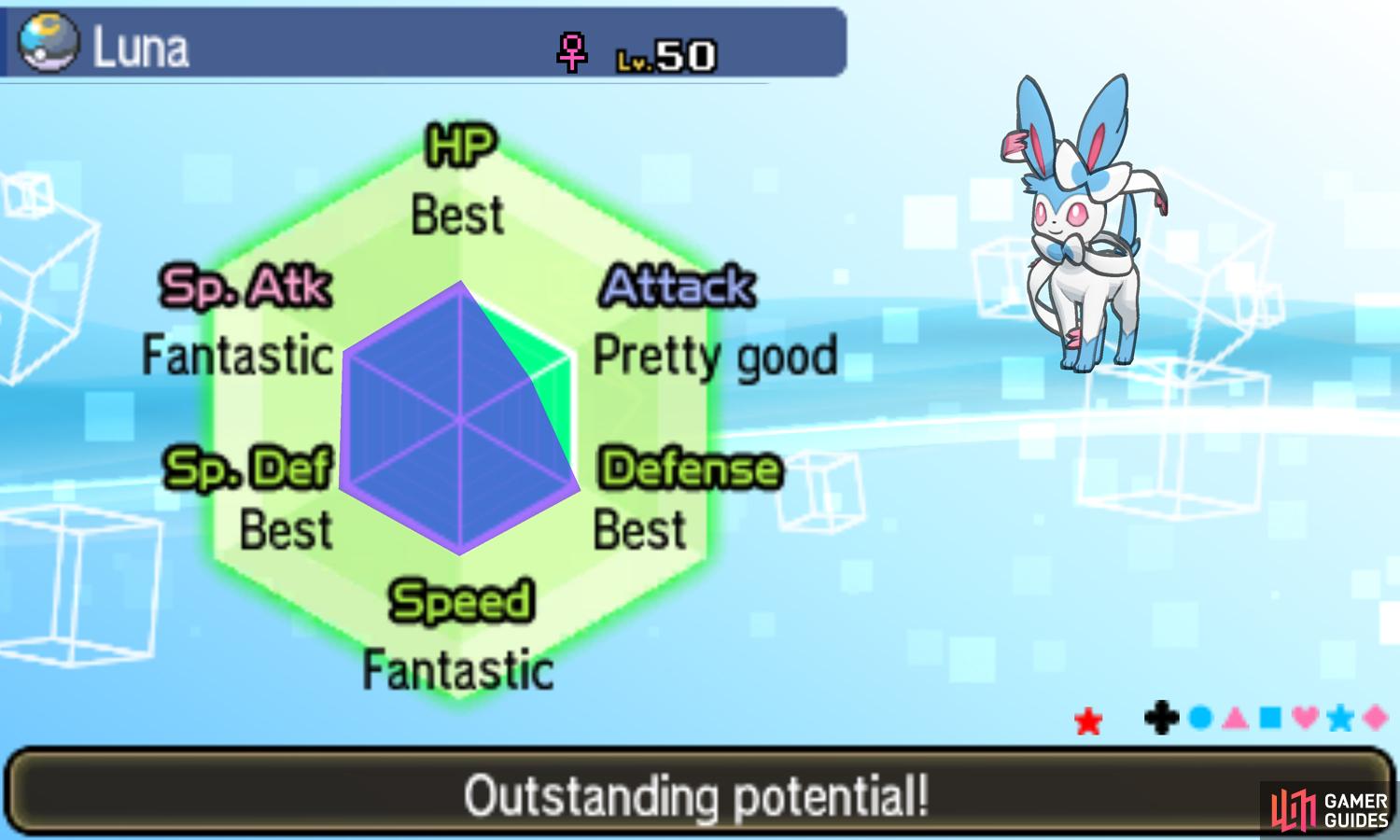(1 of 2) A Pokemon caught at the same level with the same nature can have different stats.
A Pokemon caught at the same level with the same nature can have different stats. (left), (right)
Have you ever noticed that two freshly caught Pokemon of the same species, at the same Level and even with the same Nature can often have slightly different stats?
This is the direct result of a hidden set of values known as Individual Values or IVs for short. Each Pokemon has a IV ranging from 0 to 31 for each of the six key stats: HP, Attack, Defence, Special Attack, Special Defence and Speed. The higher the IV, the better the stat.
When encountering Pokemon in the wild or breeding Pokemon, IVs are randomly assigned for each of the Pokemon’s stat. This is what causes two otherwise identical Pokemon to have different stats, hence the term Individual Values.
On a basic level, you can consider IVs as a measure of the Pokemon’s natural talent. Like how in real life, some people are naturally stronger than others, while others may be more athletic and speedier.
The IV Advantage¶
Just like Natures, knowledge of IVs is completely unnecessary for the main story, so you needn’t worry straightaway. However, there may come a time when you’ll need to consider optimising your Pokemon’s IVs.
You see, at Level 100, IVs contributes to an equivalent boost to the Pokemon’s stats. At the far extreme, the difference between a Pokemon with 0 IV in a stat versus 31 IV is 31 stat points, which is a big deal in high level play. Meanwhile, at lower Levels, the contribution from IVs is proportionally smaller.
Unlike EVs (which we’ll cover next), IVs are fixed when you obtain the Pokemon and cannot be modified through any means… or at least, until now. In Sun and Moon, you can use Hyper Training to effectively increase or lower your Pokemon’s IVs.
Still, Hyper Training is restricted to Level 100 Pokemon and it doesn’t cover every niche. Fortunately, there exists a way to acquire Pokemon with naturally high IVs–and that’s via Pokemon breeding.
Determining IVs¶
Unfortunately, the only way to accurately evaluate IVs to the number is by using an online IV calculator. Be sure to select one that’s compatible with Sun, Moon, Ultra Sun or Ultra Moon as some Pokemon species have different base stats in earlier games.
Because the effect of IVs is greater at higher Levels, you will get more accurate readings the higher Level your Pokemon are. Meanwhile Pokemon at low Levels can have a huge spread of possible IVs, making it a chore to narrow down the exact values. Don’t even bother using a calculator on a Lv. 1 Pokemon!
(1 of 2) It’s like having Pokemon X and Y’s judge in your PC!
It’s like having Pokemon X and Y’s judge in your PC! (left), (right)
Eventually, you’ll be able to befriend the stat judge and he’ll offer his stat evaluation services from any PC in Alola. However, there’s a few requirements.
- First, you will need to get to the Battle Tree in Poni Island, which is only available after you are Alola’s Champion.
- Second, you need to hatch 20 eggs or else the judge will be sleepy and unimpressed.
You done these? Sweet, the IV Judge will unlock a new feature in your PC, the Judge button. Simply tap it on the bottom portion of the touch screen and voila!
Instead of seeing the traditional Summary screen, you will see the stat hexagon with IV estimates. Each stat will have a statement next to it, such as “No Good” or “Fantastic”, and below the hexagon is another statement that will say something like “Outstanding potential!” These are the game’s way of giving you the IV values (albeit in a rather obtuse way).
Thankfully, if you are breeding for perfect Pokemon, you only need to know if your IVs meet the following numbers: 0, 30, or 31.
Reaching 31 IVs is obviously the most common goal since that is perfect. 0 IVs is common if you are making a team around Trick Room (0 IVs in Speed), or if you are making a specially based Pokemon and want to take minimum damage from hitting yourself in confusion (0 IVs in Attack).
30 IVs is commonly used to manipulate a Hidden Power type while keeping the IV as high as possible. Thus, this in-game “calculator” can really provide you all the information you need!
The following table shows the statement of individual stats and the corresponding IV range:
| Statement | IV Range |
|---|---|
| Best | 31 |
| Fantastic | 30 |
| Very Good | 26 - 29 |
| Pretty Good | 16 - 25 |
| Decent | 1 - 15 |
| No Good | 0 |
And last, but not least, here is an explanation for the second statement below the stat hexagon. The left column displays the statement, and the right column displays the range of the total sum of a Pokemon’s six IVs. This is far less useful than the above table but still worth mentioning.
| Statement | IV Total Range |
|---|---|
| Outstanding potential! | 151 - 186 |
| Relatively superior potential | 121 - 150 |
| Above-average potential | 91 - 120 |
| Decent potential | 0 - 90 |





 Sign up
Sign up
No Comments